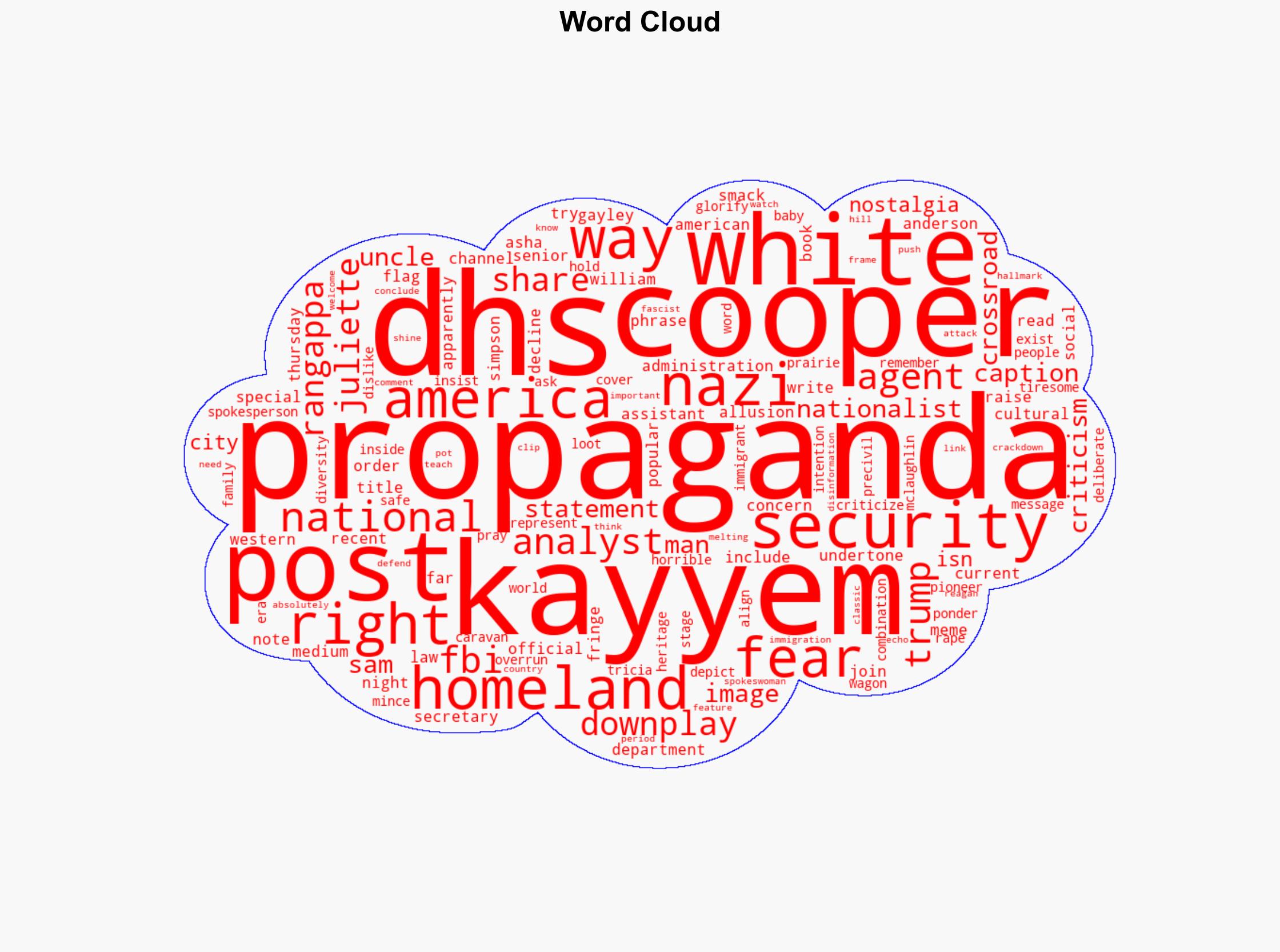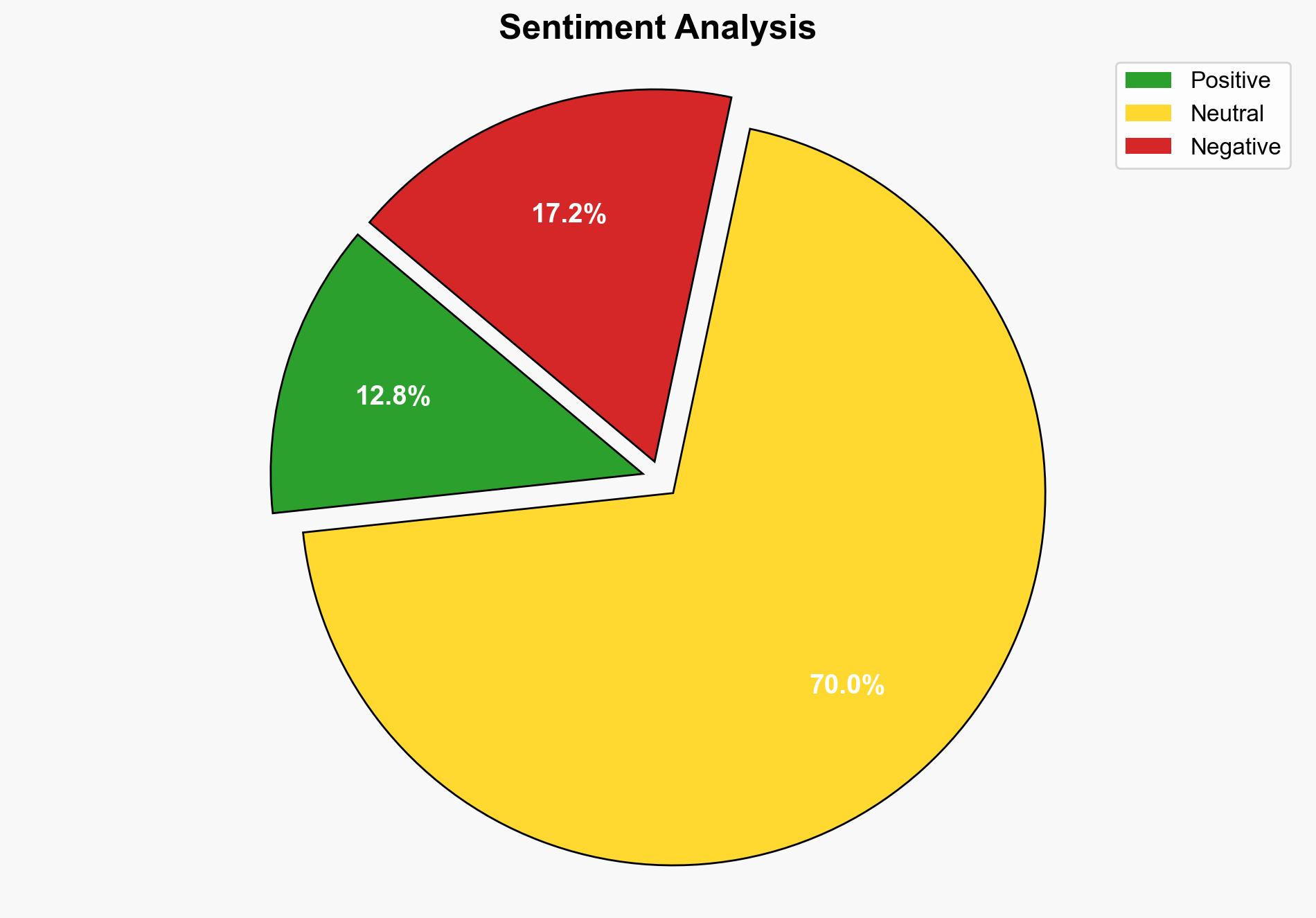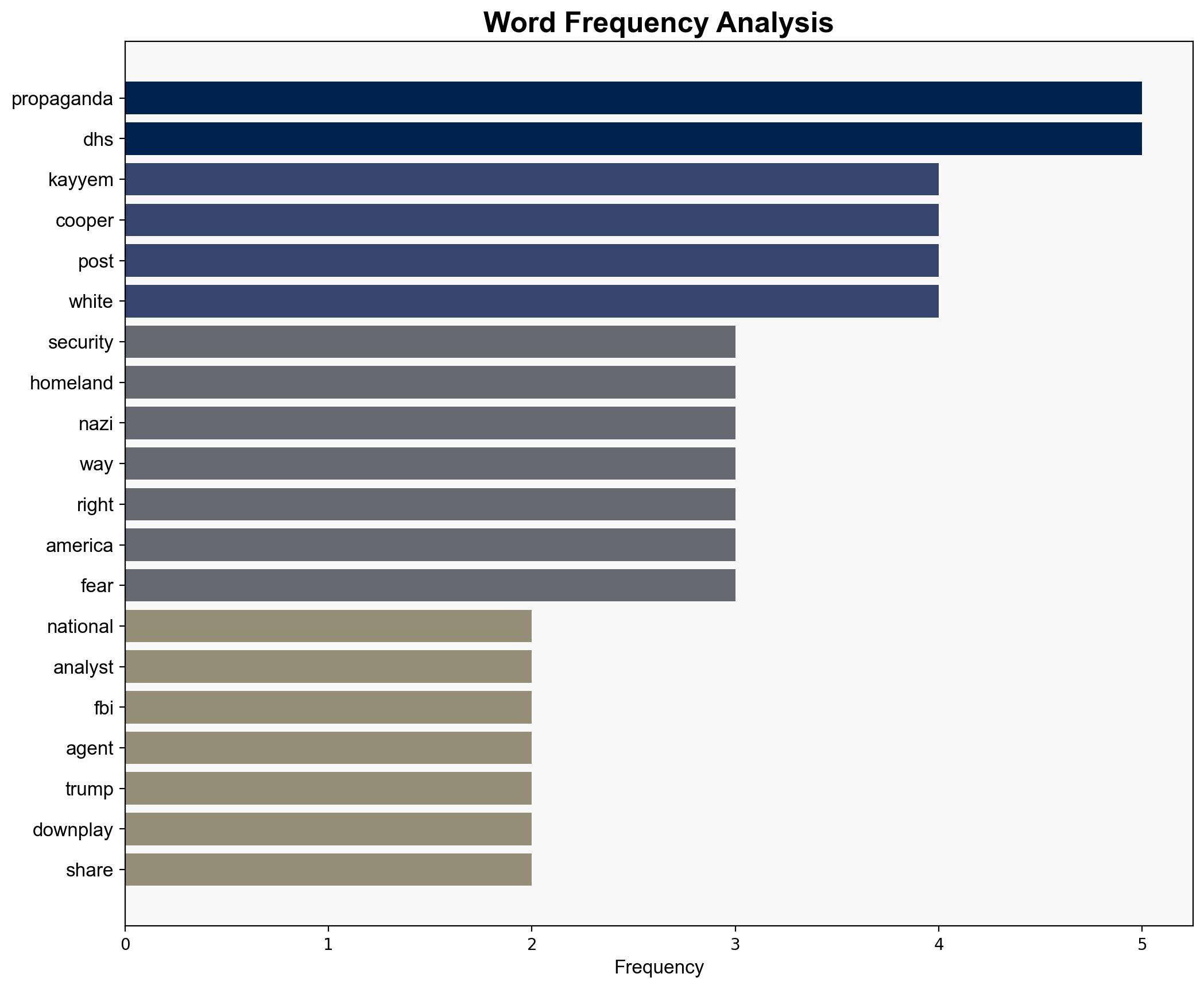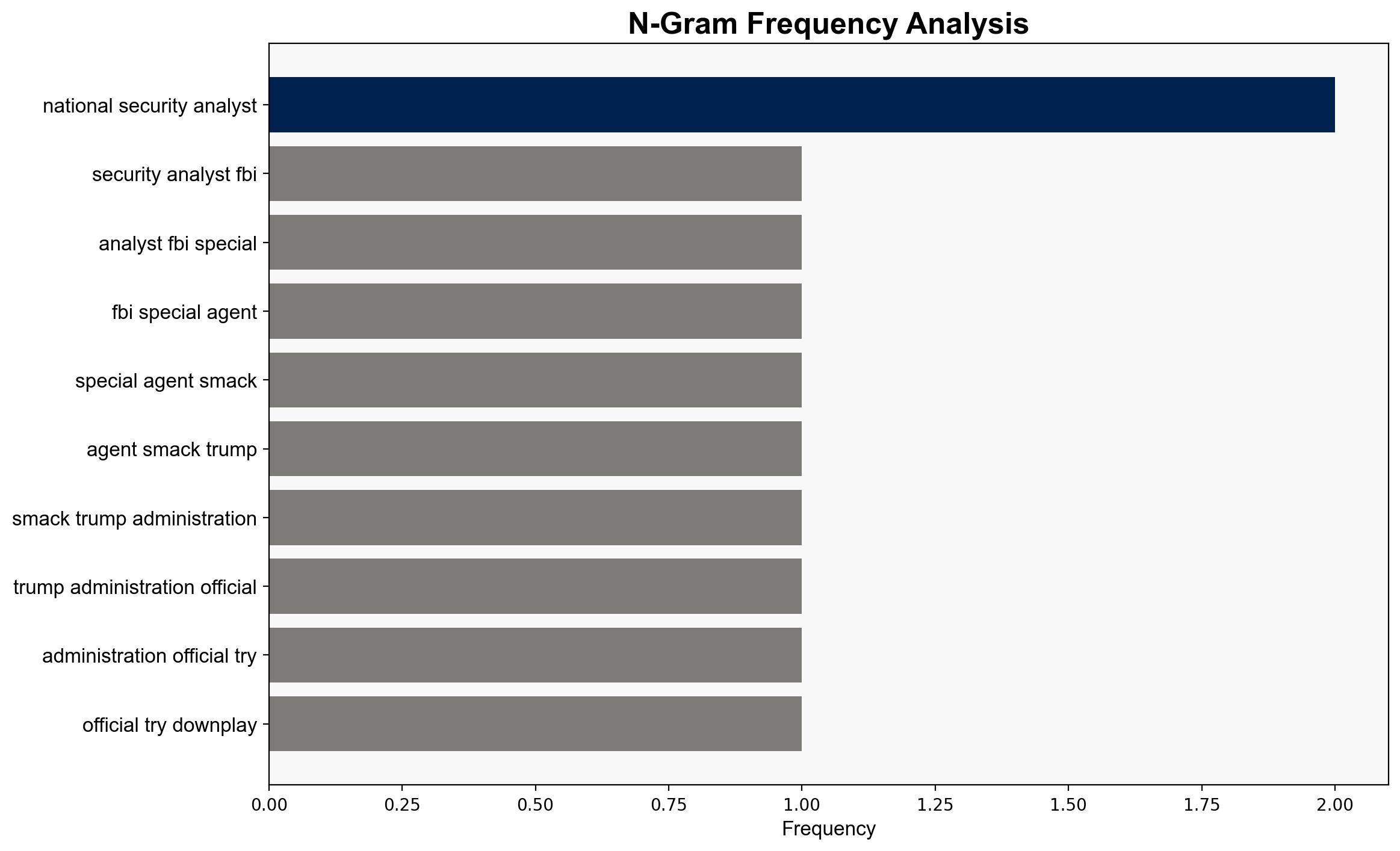‘It’s Nazi propaganda period’ Kristi Noem’s DHS called out by experts on CNN – Raw Story
Published on: 2025-08-15
Intelligence Report: ‘It’s Nazi propaganda period’ Kristi Noem’s DHS called out by experts on CNN – Raw Story
1. BLUF (Bottom Line Up Front)
The intelligence suggests two primary hypotheses regarding the Department of Homeland Security’s (DHS) controversial social media post. The first hypothesis posits that the post is an intentional alignment with far-right ideologies to bolster support for stringent immigration policies. The second hypothesis suggests that the post is a misstep or oversight, lacking awareness of its potential implications. The analysis, using structured analytic techniques, supports the first hypothesis with moderate confidence due to the contextual alignment with broader political narratives. It is recommended that DHS conduct a thorough review of its communication strategies to prevent further reputational damage and potential escalation of public distrust.
2. Competing Hypotheses
– **Hypothesis 1**: The DHS post is a deliberate attempt to resonate with far-right ideologies, aiming to strengthen support for immigration crackdowns by invoking nostalgia and fear.
– **Hypothesis 2**: The DHS post is an unintentional oversight, lacking awareness of its alignment with far-right symbolism and rhetoric.
Using Analysis of Competing Hypotheses (ACH), the first hypothesis is better supported. The post’s imagery and language align with known far-right narratives, and the timing coincides with heightened immigration policy debates.
3. Key Assumptions and Red Flags
– **Assumptions**: It is assumed that DHS communication strategies are centrally coordinated and that the post reflects broader policy intentions.
– **Red Flags**: The DHS spokesperson’s dismissal of criticism as “tiresome” suggests a potential underestimation of public perception risks. The lack of explicit disavowal of far-right associations is concerning.
– **Blind Spots**: There is limited insight into internal DHS decision-making processes regarding social media content approval.
4. Implications and Strategic Risks
– **Patterns**: The use of nostalgic imagery and language could embolden far-right groups, potentially increasing domestic tensions.
– **Cascading Threats**: Continued alignment with far-right narratives may lead to increased polarization and undermine public trust in DHS.
– **Potential Escalation**: Failure to address the issue could result in heightened scrutiny from media and civil rights organizations, impacting DHS’s operational effectiveness.
5. Recommendations and Outlook
- Conduct an internal review of communication strategies to ensure alignment with DHS’s mission and public expectations.
- Engage with external experts to assess the impact of public communications on national security perceptions.
- Scenario Projections:
- **Best Case**: DHS clarifies its stance, distancing itself from far-right ideologies, restoring public confidence.
- **Worst Case**: Continued missteps lead to increased public distrust and potential policy setbacks.
- **Most Likely**: DHS takes corrective action, but residual skepticism remains among certain public segments.
6. Key Individuals and Entities
– Juliette Kayyem
– Asha Rangappa
– Tricia McLaughlin
7. Thematic Tags
national security threats, cybersecurity, counter-terrorism, regional focus





